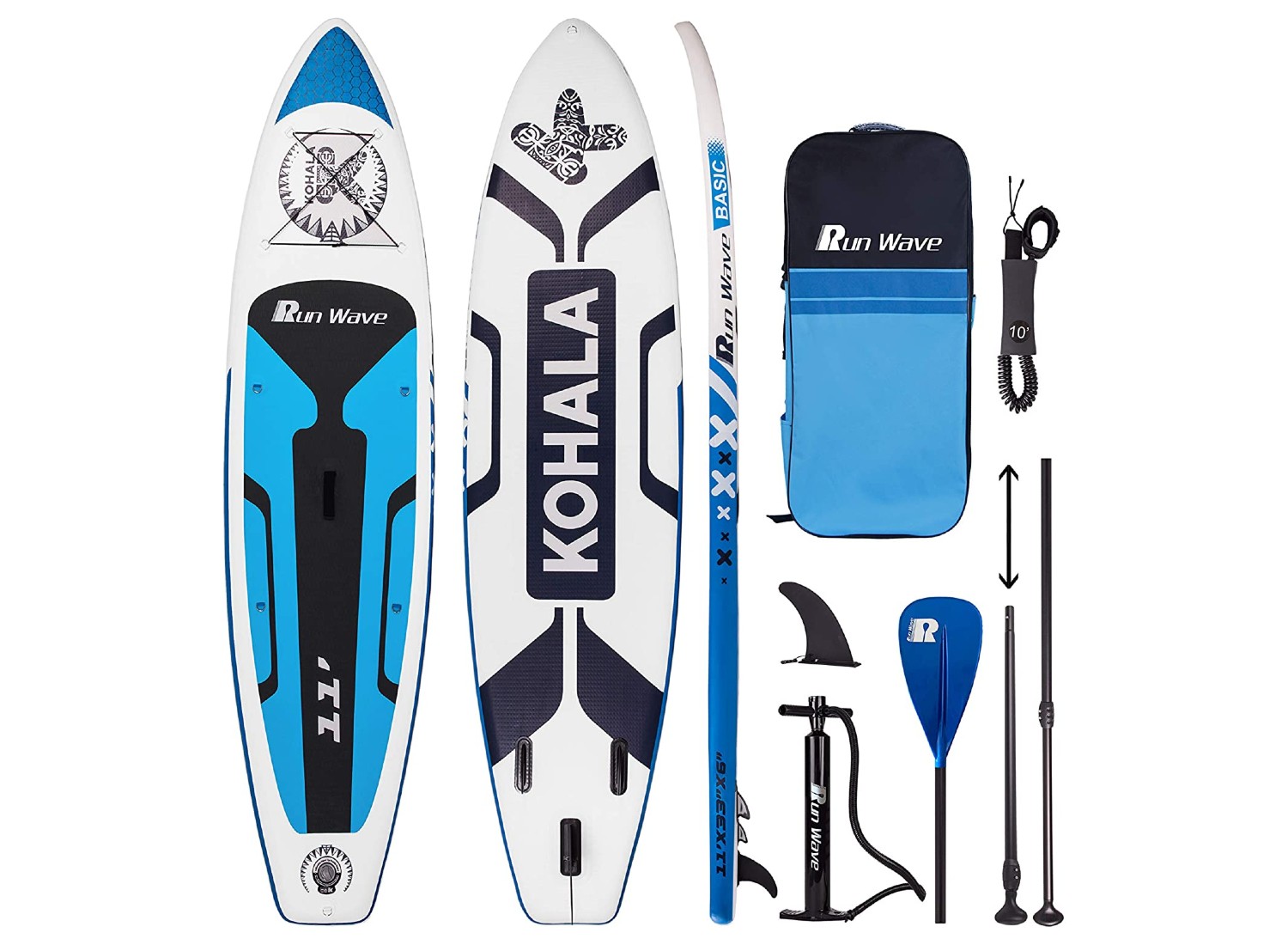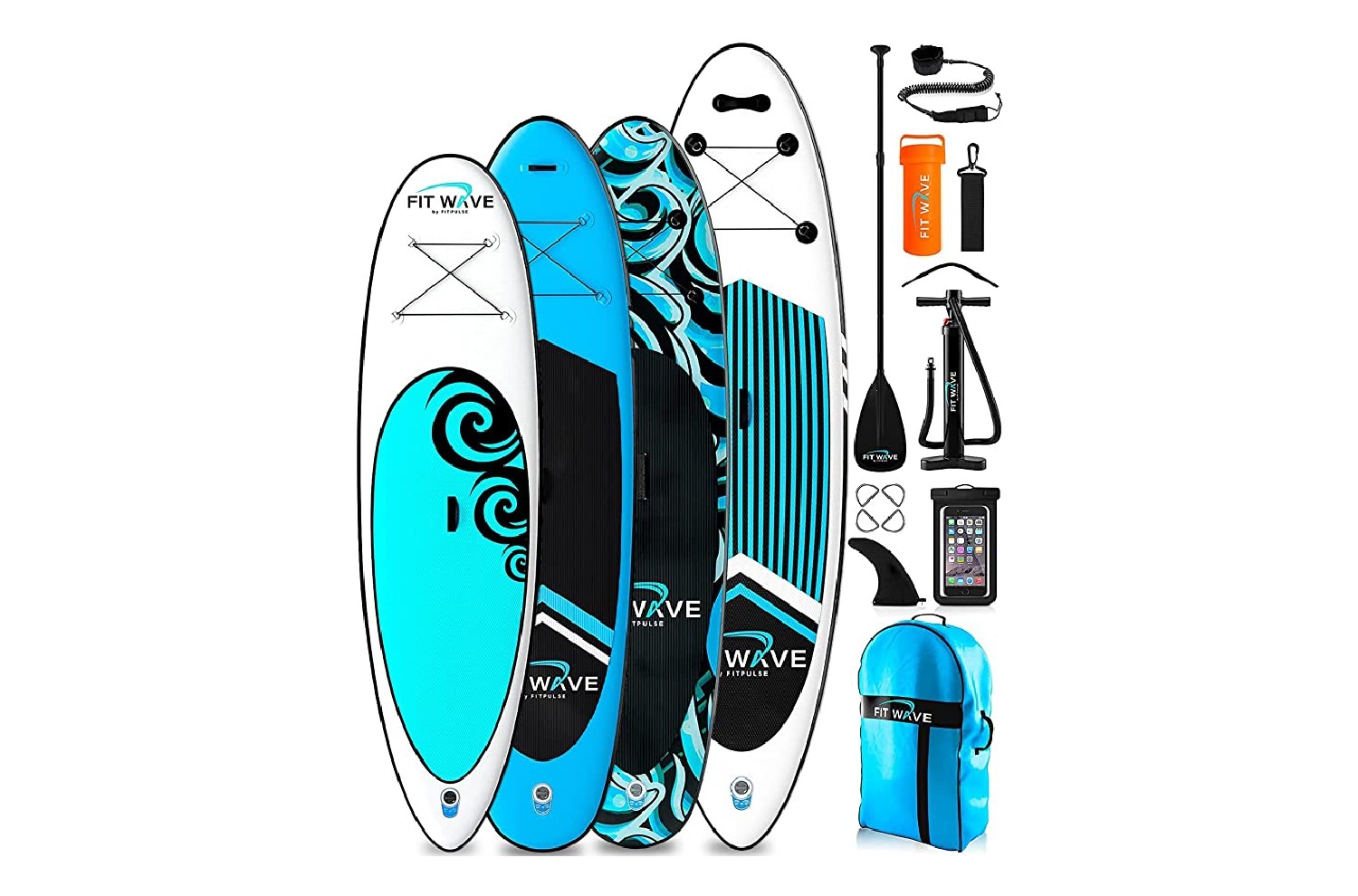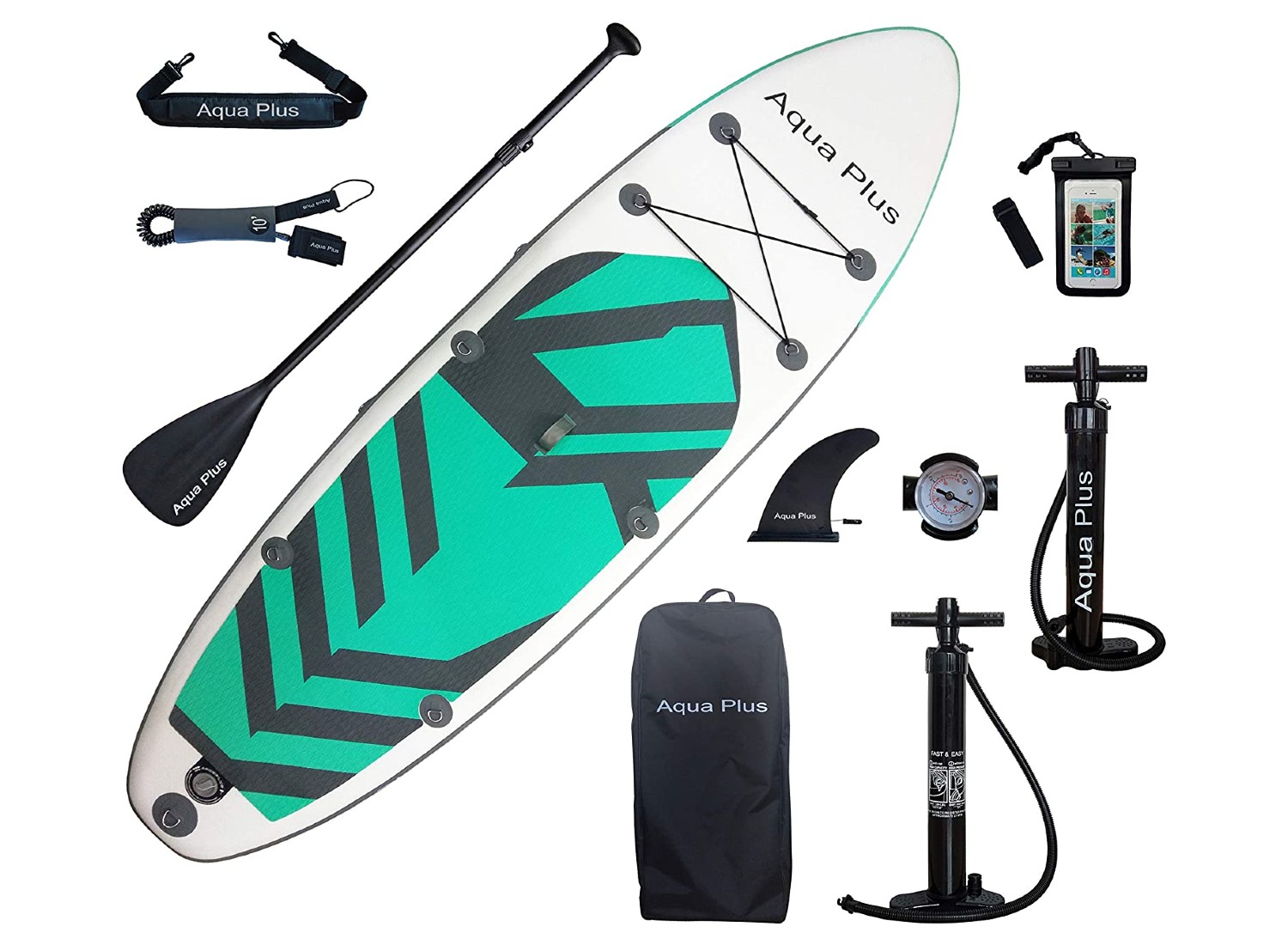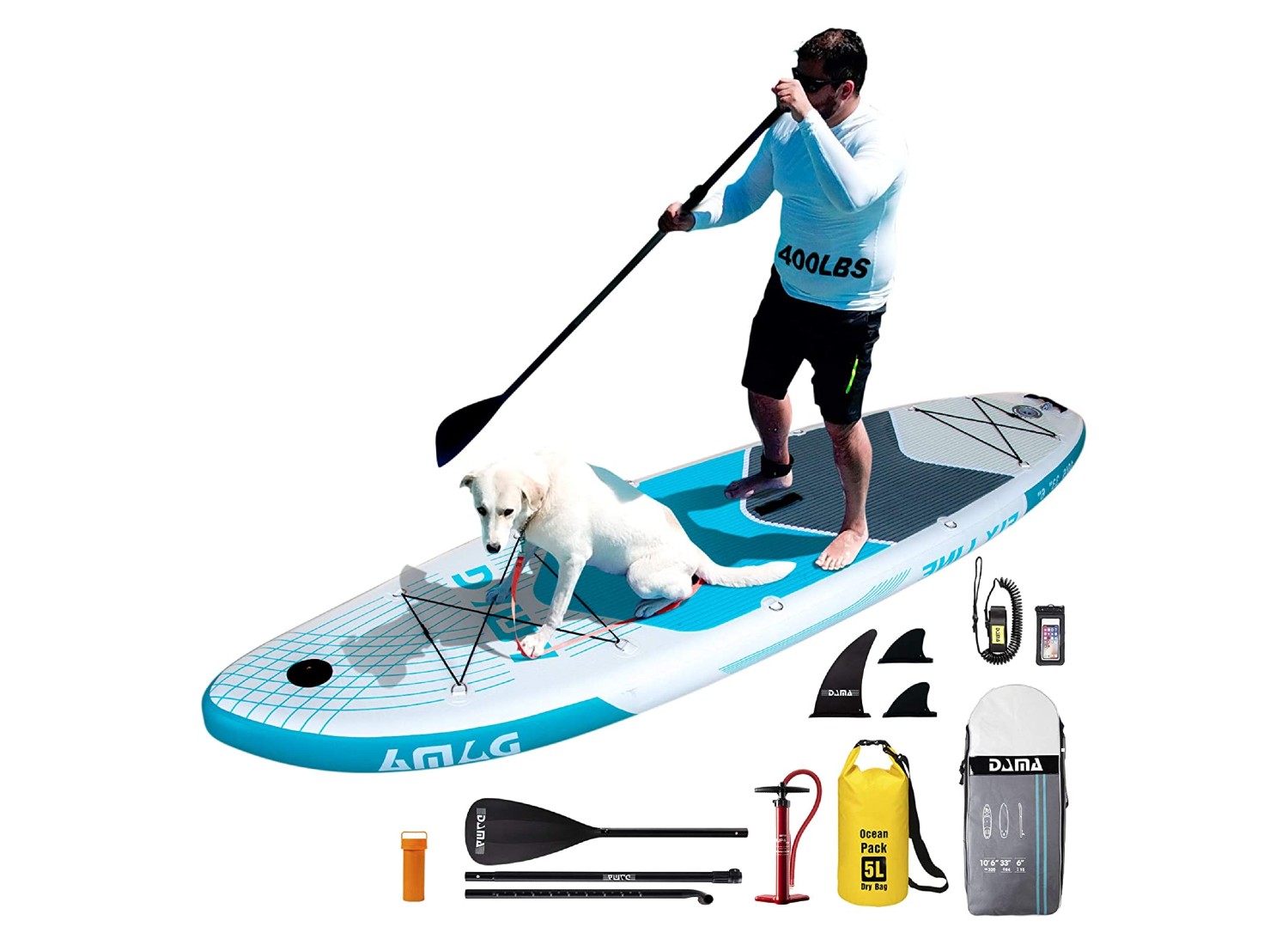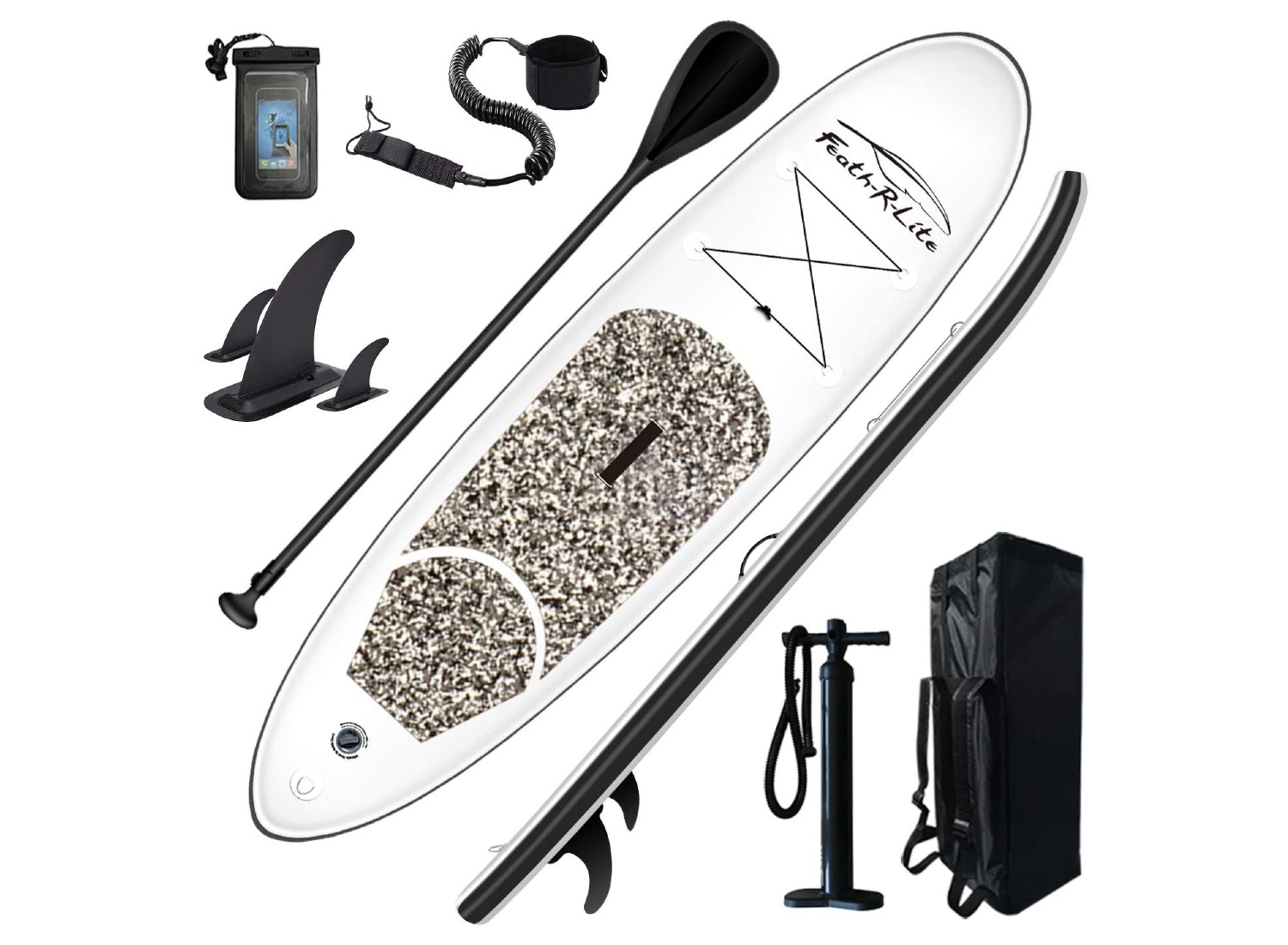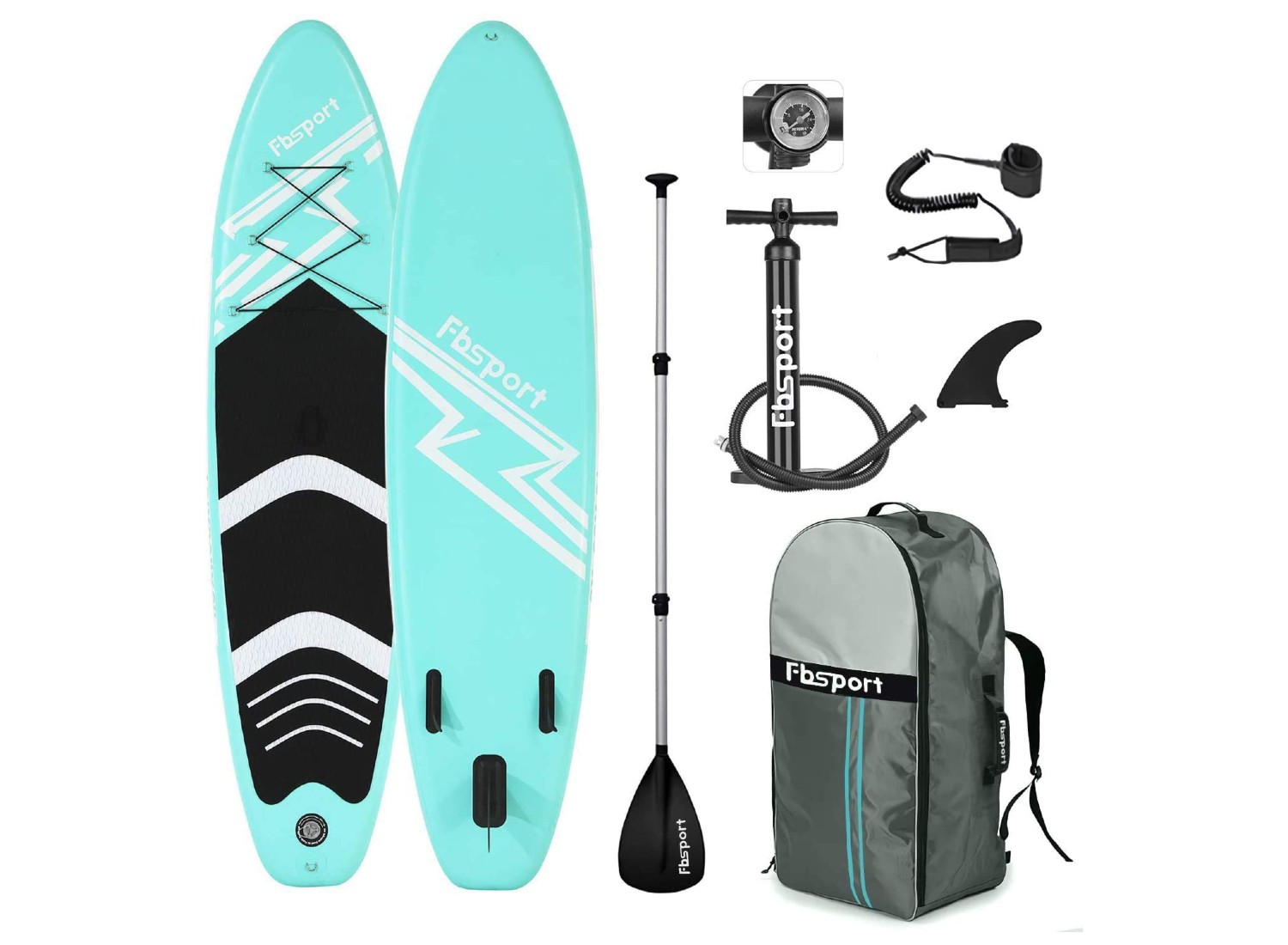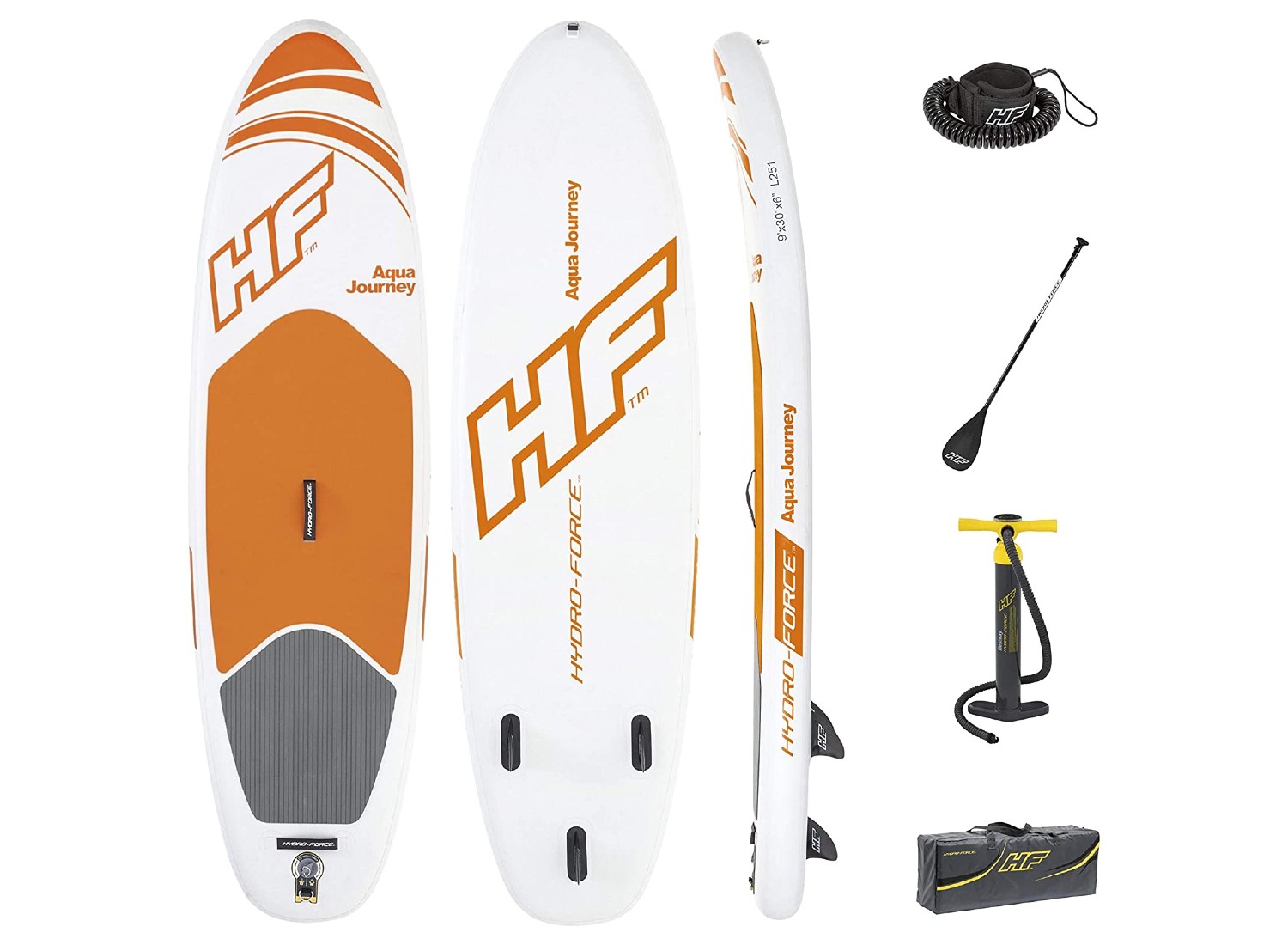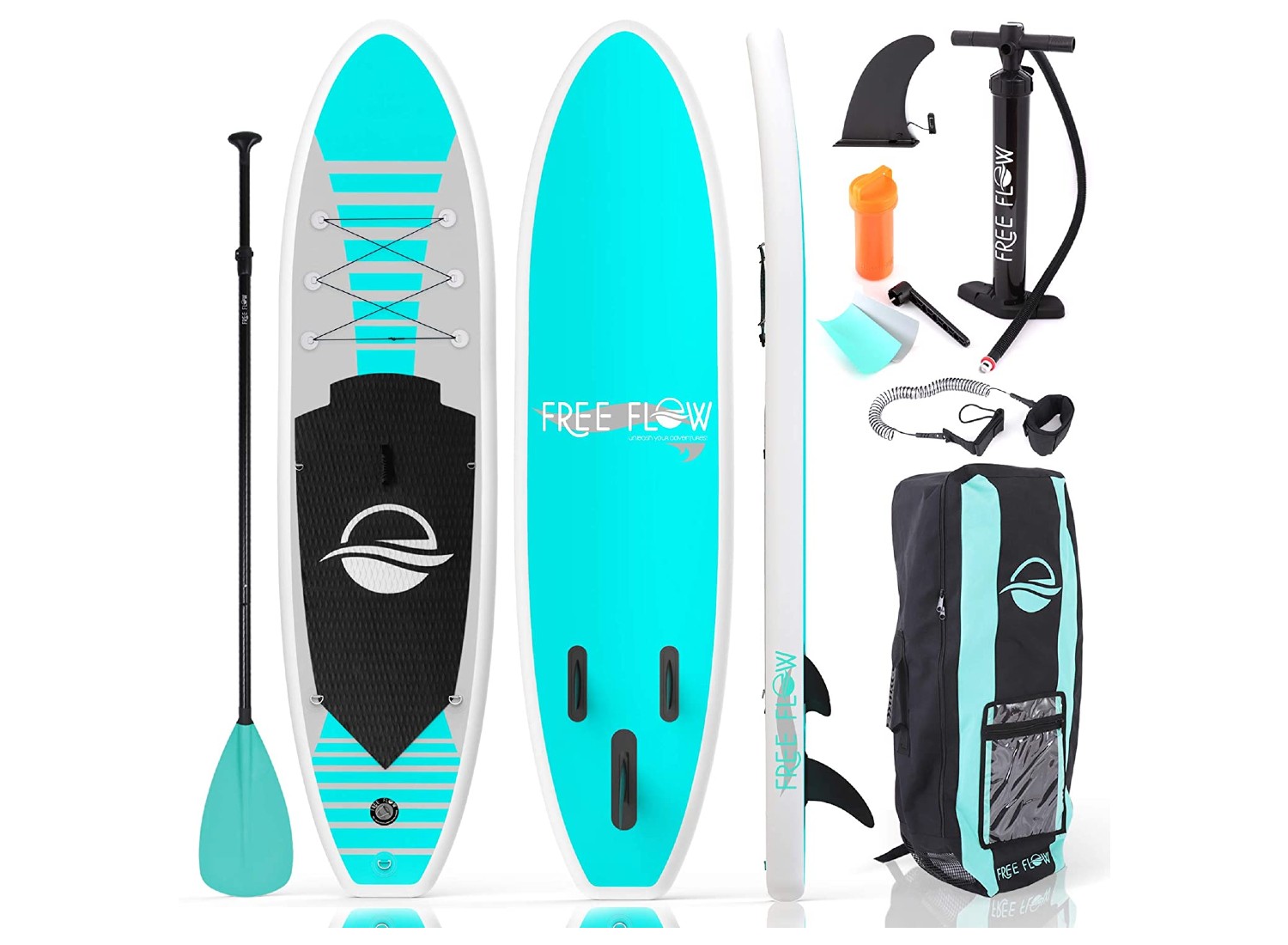Make Memories Last On The Best Paddleboards
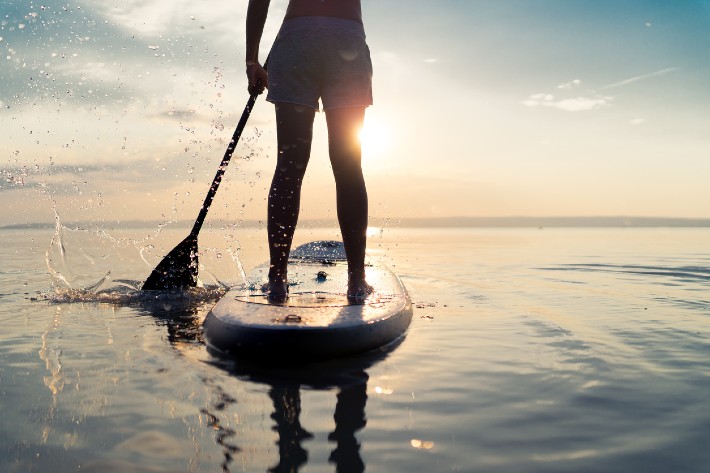
Paddleboards have evolved from being just surfing boards to a tool for various types of recreational and sporting activities. You can do quite a lot with paddleboards now. Apart from surfing, they are now used for fishing, touring, racing, and yoga practice. Since preference, use, and aesthetic taste may differ when it comes to paddleboards, we are here to give you a breakdown of the best paddleboards in 2024.
A paddleboard is a long narrow board meant for use on the water. Traditionally, paddleboards are propelled by the user lying down flat and using a swimming motion. However, today paddle boards can be used with a paddle that allows the user to control the board’s speed and direction. This guide brings you the best paddleboards to elevate your paddling experience.
Our Top Picks
- Best Overall: Runwave Inflatable Stand Up Paddleboard Shop Now ➔
- Best Features: FITWAVE Paddleboard Shop Now ➔
- Best for Newbies: Aquaplus Inflatable Stand Up Paddleboard Shop Now ➔
- Best for Teenagers: DAMA Inflatable Stand Up Paddle Board Shop Now ➔
- Best for Flat Water: FunWater Inflatable Stand Up Paddle Board Shop Now ➔
- Most Lightweight: FEATH-R-LITE Inflatable Paddleboard Shop Now ➔
- Best for Yoga: FBSPORT Premium Inflatable Stand Up Paddle Board Shop Now ➔
- Best for Kayaking: Bestway Hydro-force Oceana Inflatable Stand Up Paddle Board Shop Now ➔
- Best for Touring: SereneLife Inflatable Stand Up Paddle Board Shop Now ➔
- Best Paddleboards Buying Guide
- 1 What Are Paddleboards?
- 2 What Are the Types of Paddleboards?
- 3 Solid paddleboard
- 4 Inflatable paddleboards
- 5 Tips for Using a Paddleboard
- 6 What Do I Need to Consider Before Buying a Paddleboard?
- 7 Length of the paddleboard
- 8 Width of the paddleboard
- 9 Weight capacity
- 10 Fins
- 11 Attachments and extras
- 12 How Much do Paddleboards Cost?
- 13 Final Thoughts on Paddleboards
- People Also Asked
Best Paddleboard
Best Overall
This inflatable stand up paddleboard is made from high-quality PVC materials that make it lightweight and durable. Its 11-inch long and 33-inch wide body makes it comfortable for users. It also comes with a safety ankle leash, backpack, and aluminum paddle.
The Runwave inflatable SUP paddle board glides through the water like a champ. It can be used for kayaking as it has a D-ring that makes it easy to attach a kayak seat or other paddleboard attachments.
Pros
- The paddleboard is easily inflatable. Inflation up to 15 psi takes less than 10 minutes
- Its 33-inch width improves stability and makes it ideal in choppy waters
- It can take up to 352 lbs of weight
Cons
- At 25 lbs, its weight is on the high side for an inflatable stand up paddleboard
Best Features
Paddleboarding is a terrific way to perform a total body workout, according to health and fitness experts. And what better way to enjoy paddleboarding than on the FITWAVE Paddleboard? This inflatable SUP board is made of premium materials and includes many features to make your time on the water more enjoyable, including a non-slip EVA deck pad, bungee ties, and a triple bottom panel fin setup. Perfect for fishing, paddling, yoga, and more, this 10-foot board can support up to 242 lbs without showing any issues. And with the included aluminum paddle, coiled ankle leash, waterproof phone case, and paddle pump, you’ll be ready to hit the water as soon as you receive your board!
Pros
- Stable and easy to maneuver
- Better tracking
- Offers an amazing workout while surfing waves
Cons
- Low portability
Best for Newbies
The Aquaplus inflatable stand up paddle board is made to mirror the rigidity of conventional hard boards. It is ideal for beginners that are just starting out or experienced surfers making the switch from hardboard to inflatable paddleboards. With six inches of thickness, it is stable on choppy and calm water.
The Aquaplus inflatable paddleboard comes with removable fins that help the board maintain stability inside water. It has a wide body design that makes paddling fun and hassle-free and weighs only 20 lbs. It is foldable and can easily be stored.
Pros
- The Aquaplus inflatable SUP has a shoulder strap for you to hang the board over the shoulder when transporting
- The board can take up to 350 lbs of weight without any issue
- Has a waterproof phone holder that enables users to take pictures underwater if they choose to
Cons
- Takes up to 20 minutes to fully inflate
Best for Teenagers
The DAMA inflatable stand up paddleboard comes with a camera stand for users to mount their cameras and seamlessly take pictures and record videos. It also has a foldable aluminum paddle that floats on water.
It was built with ease of use in mind. The D rings allow users to attach extra seats and board accessories. Paddlers have more freedom to accessorize the paddleboard.
Pros
- It comes in different length sizes, making it ideal for teenagers who may not be able to handle full-length paddleboards
- Has extra waterproof bags to keep essentials from getting wet when in water
- It can take up to 400 lbs of weight without issue. You can take your pet along for a paddle ride on this
Cons
- It is less stable than other inflatable paddleboards in the same price range
Best for Flat Water
The FunWater inflatable SUP is and ideal for flat water like lakes and rivers. It is easy to assemble and floats well at only 12 psi. It comes in two different color variants. Users can choose between the blue colored paddleboard and the pink colored one.
It measures 33 inches in width, making it stable and firm. At only 17.6 lbs, it is lightweight and can be carried around easily.
Pros
- It has extra waterproof bags to hold essential accessories
- It inflates quickly
Cons
- It cannot support more than 300 lbs of weight
- The paddle is heavy
Most Lightweight
The FEATH-R-LITE inflatable is an ultra-lightweight, short-length SUP board with an adjustable paddle that floats on water. It comes with three fins (two fixed and one removable) that enhance stability over long water distances. The two fixed fins work well without the removable fin in shallow rivers.
It measures only 16.7 lbs in weight, making it easy to carry around. Its 33-inch wide body makes it firm enough to withstand turbulence.
Pros
- The paddleboard inflates easily
- It comes with a waterproof bag to keep mobile phones from getting wet
Cons
- It cannot support more than 220 lbs of weight
Best for Yoga
The FBSPORT premium inflatable SUP board is a short-length paddleboard that compensates for its short length with a wide-body design. The wide-body design and firmness on the water make it the ideal option for paddleboard yoga.
At $299.99, this paddleboard is a bargain for the maneuverability and durability it offers.
Pros
- Available in different colors
- The board fully inflates in less than 10 minutes
- The short length makes handling easier for beginners
Cons
- The paddle does not float
Best for Kayaking
The Bestway Hyro-force Oceana inflatable SUP paddle board has a wide body design that enhances its firmness and grip. The paddleboard’s lightweight and petite length make it easily maneuverable for kayaking. It comes with safety tools like an ankle leash for a safe ride on the sea.
The paddleboard measures only 9 inches in length but boasts a thickness of 6 inches that allows it to weather turbulent water easily.
Pros
- Inflating the paddleboard takes less than 10 minutes
- It can serve as a kayak boat
Cons
- The ankle leash is made of velcros which absorbs moisture
Best for Touring
SereneLife inflatable SUP is designed to hold out in rough water terrains. The paddleboard comes with a coiled ankle leash for the paddler to stay attached to the board while enjoying a good view of the sea.
With a 6-inch thickness, the board’s length stands at over 10 inches, making it a balanced board for a calm adventure on the water.
Pros
- It weighs less than 20 lbs
- It can take more than 250 lbs of weight
Cons
- The pump is hard to use
Best Paddleboards Buying Guide
What Are Paddleboards?
Paddleboards are flat boards designed for use on water surfaces like rivers, lakes, and oceans. Paddleboards are the primary instrument needed for paddleboarding. Paddleboarding is a water-based sport/recreation that involves participants finding their way through water performing various actions like surfing, yoga, fishing, or racing. Oftentimes, paddleboards are used in a standing position hence the name ‘Stand Up Paddleboarding (SUP).’
What Are the Types of Paddleboards?
There are two types of paddleboards. The classification is done based on the material used to make the paddleboard.
Solid paddleboard
Solid paddleboards are made from solid materials like Expanded Polystyrene (EPS) foams coated with epoxy and fiberglass to give it a solid outlook. Solid paddleboards are also made of plastic and sometimes lightweight wood. Solid paddleboards are preferred for their relative stability and ease of use.
Inflatable paddleboards
Inflatable paddleboards are made with PVC exteriors. The drop-stitch construction makes it inflatable and deflatable. When inflated, inflatable paddleboards take on a strong, rigid form that mirrors solid paddleboards. They come with pumps for inflating the paddleboard and bags to store the deflated board after use. Inflatable paddleboards are preferred for their ease of storage and transport.
Tips for Using a Paddleboard
If you are using a paddleboard for the first time, it is ideal that you use it in shallow water bodies where you can easily navigate and find your way to the shore.
What Do I Need to Consider Before Buying a Paddleboard?
There are various factors to consider before buying a paddleboard. These factors vary from person to person and are sometimes interwoven.
Length of the paddleboard
The paddleboard’s length is a major determinant of how well you will be able to handle the paddleboard. There are short, medium, and long lengths for paddleboards. Paddleboards with short lengths are ideal for use by kids and for surfing. Medium-length paddleboards are good for yoga and general use. Long-length paddleboards are good over long distances.
Width of the paddleboard
The paddleboard’s width affects stability and overall handling. The wider a paddleboard is, the more stable it is to handle. Wider boards also give paddlers extra storage space to carry extra things along. Also, wider boards are better for yoga paddling as it affords the yogi better stability and more space to practice different poses.
However, experienced paddlers may prefer narrow paddleboards because of the dynamism it brings.
Weight capacity
The paddleboard’s weight capacity refers to the maximum weight the paddleboard can hold afloat on water. This includes the weight of extras like coolers and pets. Obviously, a paddleboard with a higher weight capacity serves the user better. Though they tend to cost more than paddleboards with a lower weight capacity.
Fins
Fins are attached under a paddleboard to provide it with better stability and tracking. Fins take different configurations. Some paddleboards feature only one fin, some feature three fins, and some the 2+1 fin. The 2+1 fin configuration includes two permanently fixed fins and a third fin that is removable. This configuration is common with inflatable paddleboards and gives users more control of the dynamics of the paddleboard’s movement.
Attachments and extras
Another factor to consider before buying a paddleboard is the board’s space for attachments and extras. This factor is important for users that want their paddleboard to serve a dual purpose. Space for attachments like bungee straps could come in handy when attaching kayak seats to the board. They can also be used to firmly secure clothes and coolers. Also, some paddleboards have special mounts to attach cameras to seamlessly take pictures while on water.
How Much do Paddleboards Cost?
The prices of paddleboards vary due to various reasons like type, length, and thickness. You can find cheap inflatable paddleboards at $200 and high-end epoxy boards at over $1500. You can get a balance for cost and efficiency with paddleboards within the price range of $300 and $800.
Final Thoughts on Paddleboards
Paddleboards are great tools for recreation and exercise that bring you closer to nature. Whether on a family or personal vacation, you can accomplish a lot of fun activities with them.
Since paddleboards are only used inside water, users should have basic swimming ability in case of any eventuality. They usually come with safety leashes that are meant to be attached to the board and the user’s ankle. Users should endeavor to have the leash on at all times. Also, having a personal flotation device when paddling is highly recommended.
People Also Asked
How hard is it to inflate an inflatable stand-up paddleboard?
Depending on the user’s arm power, inflating a stand-up paddleboard with a manual air pump could be easy or tasking. It takes between 5 and 15 minutes to fully inflate an inflatable board. To lower the stress, users can get an automatic air pump to pump air into the board.
What is psi?
Psi refers to pounds per square inch. It is a measurement of the air pressure inside an inflatable board. Inflatable paddleboards will typically have a maximum capacity of 20 psi. Ideally, most manufacturers recommend a 15 psi pressure. Although some inflatable boards are usable at 12 psi.
Is it okay to leave my inflatable paddleboard inflated?
When not in use, it is better to deflate the inflatable paddleboard because it will keep losing air pressure day after day. Also, deflating the board makes it easier to store and transport.
Can you put a dog on an inflatable paddleboard?
Yes, you can. Inflatable paddle boards are designed in a way that gives good traction for dogs’ paws. You should, however, be mindful of not exceeding the paddleboard’s maximum weight capacity when bringing pets onboard.
Is it better to buy a hard or inflatable paddleboard?
The two types of paddleboards have their pros and cons. However, as a new entrant, inflatable boards have the edge. They are easier to store and carry and offer the same solidity as hard paddleboards when fully inflated.
Article Contributors
SAIL Magazine Review Team reports on best-selling products in sailing and boating. The SAIL Magazine editorial staff is not involved in the creation of this content. SAIL Magazine is reader-supported: When you buy through links on our site, we may earn an affiliate commission. The SAIL Review Team is composed of authors, editors, and sailors. Artificial Intelligence (large language models) may have been used in the research and creation of the content.
To ensure questions about product testing or a specific article are addressed, please contact aimperiapt@gmail.com

